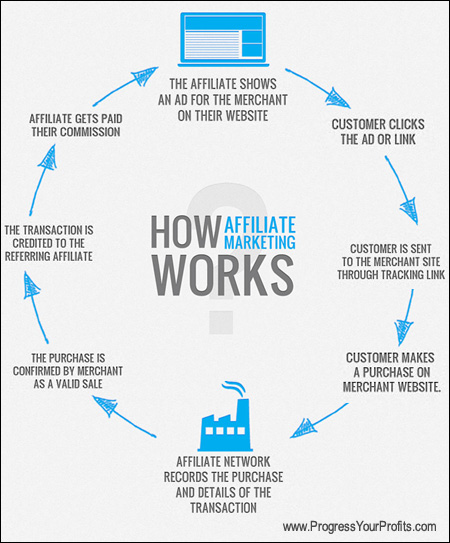"See How We Made Refunds Profitable For One Online Education Company"
|
Every Company That Sells Products Gets Refunds - But Did You Know
You Can Actually Make Money From Refunds You Receive?
|
|
|
By Michael Maven The following method was used for a client in a very profitable niche business. Of course when a business is so profitable there tends to be a lot of competition as well. The client was already running the company like well oiled machine. We were brought in to see where the business could be optimised. |
Early Analysis Revealed An Area For Improvement
Our client sold informational products which have a high perceived value and can be supplied at a minimal cost. So they had high profit margins on their side. They were also helped by the fact they were in a specific niche that is known for having serious customers with a high lifetime value.
But although this company was doing very well, there was something that stood out to us when we ran our early diagnostics on them.
They seemed to have a slightly higher refund rate (than normal) on one of their core products. We recognised this because we've worked with selling informational products before.
So we wanted to look into this to start with.
Since this was a product that sold a high number of units, we thought this would be a good place to start.
Now, there can be a lot of reasons for refunds. And it's always a good idea to get to the bottom of these reasons to make sure your company runs smoothly in the long term.
But we wanted to start with a fast solution that got quick results.
The Numbers Game
Our client sold an information course with a piece of software that automated tasks for the the buyer. The course sells for £1,997. It's also a fairly top end, luxurious package. And so it costs around £41 to fulfil each course they sell.
Now, when our client has to issue a refund, they have to give back the entire £1,997 to the customer. This leaves them with no revenue from their course. It also means they are £41 in the red for each refund they receive.
How Could We Change That?
Well first let's look at the marketplace. There are a few main competitors in this specific area. One of them (competitor 1) offers something very similar to our client and they also have a very good reputation in the marketplace.
Just like our client, competitor 1 also offers a similar home study course with software, for £2000 (approximiately). Because our client is in the same market, we can assume their costs for providing the physical materials for their course is also similar to our own cost of £41.
This means their hard profit per sale is £2,000 - £40 (approx.) = £1,960. A high profit (and margin) like this is very common when selling an informational component.
One other thing that is very commonly found on products like these are associated affiliate programs.
How Does The Affiliate Program Work?
An affiliate program helps a company to sell more of their products with no costs. They simply pay a fixed fee or percentage of the sale to the person who referred the sale.

How online affiliate marketing works.
So for example, competitor 1 had an affiliate program which offered
50% of a sale to the person which referred the sale.
So imagine we put competitor 1 in touch with a person who went on to buy their £2,000 home study course from them. If we did this, competitor 1 would give us £1,000 for every person we sent them.
So How Did We Make Refunds Profitable?
We have a strong background in affiliate marketing. So we used a blend of our own sales and affiliate marketing to make our clients refunds profitable.
We already had:
- Spent £136 of good advertising money to find a person who was interested in topic X.
- A person who was willing to spend £2,000 on a home study course about topic X.
- A company who was willing to pay us £1,000 for a new customer that was interested in topic X.
Here's how we did it:
We changed the original money back guarantee that was first made to the customers. Instead of simply refunding all the money to the customer, we asked them to return all our physical materials.
|
We also promised that if they weren't happy with our product for
any reason then we would BUY the competitor 1 product for
them instead. This is the offer we made to the customer. And it makes us look even better than before because now the customer has even less risk. They get to buy our clients program and if they don't like it, they get to try a competitors program for no extra cost. |
So now instead of losing 100% of the money when someone refunded, our client was making £820 for each person who wanted to try a competing product. |
So now, each time we had a refund request, we simply asked if they wanted us to buy the competitor 1 product for them, so they could try that out instead.
Over 73% of people we asked said yes!
Here Are The Figures...
So for each customer refund who said yes to signing up with competitor 1, this is what the figures looked like:
Revenue In:
- £1,997 for the client course
- £1k affiliate paid from competitor 1 to us for the new customer.
- Total Revenue = £2,997.
Costs:
- £41 to fulfil the client home study course.
- £136 advertising cost to acquire the original customer.
- £2,000 to buy the competitor 1 course for the customer who wanted a refund from the client.
- Total Costs = £2,177.
Total Profit Per Agreeing Customer Refund = £2,997 - £2,177 = £820.
What Just Happened
Our client was currently getting a few refunds as every company does. Previously they were losing 100% of this revenue as refunded money.
We managed to create a new offer which gave refunding customers a competing product at no extra cost to them.
|
|
We basically figured out how to take the refunded money and turn
it into £820 for every refunding customer who took us up on the
offer. So now instead of losing 100% of the money when someone refunded, our client was able to keep £820 for each person who wanted to try a competing product. It was a good way of turning lost revenue into income. |
Obviously the next thing we did was work on lowering the number of refunds our client was getting.
But that's another case study that we'll make available shortly...
In the meantime, if you want to have creative and profitable strategies like this for your company, you should see the limited time 'Lost Profit' Finder: Diagnostic Session.
It's a diagnostic report revealing where the hole and slack point lay in your business. It will also show you how to uncover hidden 'profit points' like above, but for your company.
The report is available on a limited basis because it take a real business advisor to build the bespoke report for your company. And it will reveal hidden areas of profit and competitor crushing strategies that you'll never find on your own.
It can also show you how to free up your time by automating processes that are currently able to be consolidated.
It took a long time to figure this all out and be able to put it into a company and have it working like a system. Now it's your turn to see how it's done.
Start right now with your own, limited time,
'Lost Profit' Finder: Diagnostic Session

